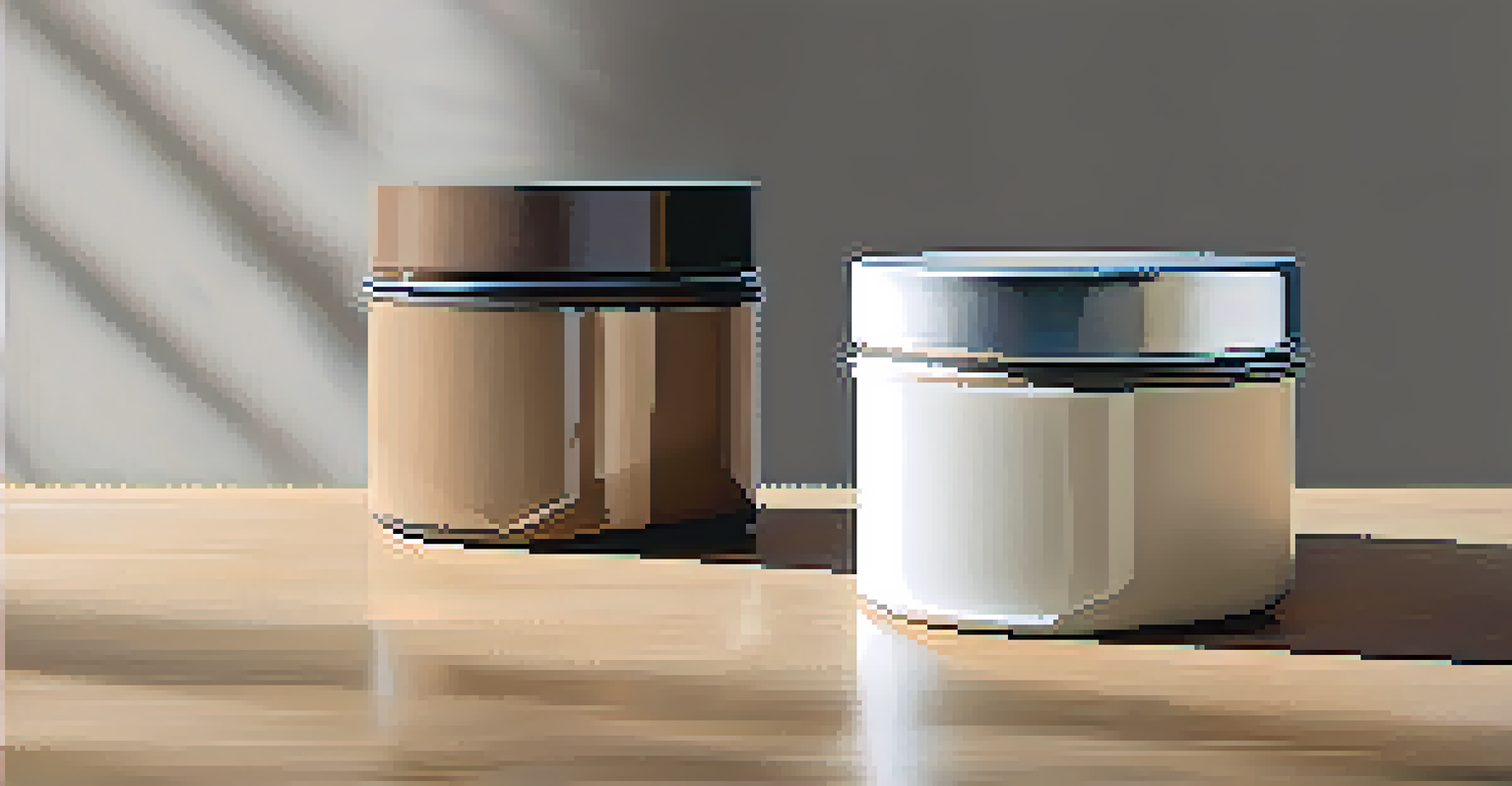Understanding Viscosity: How Thickness Affects Paint Behavior

What is Viscosity and Why Does it Matter?
Viscosity refers to a fluid's resistance to flow, which is why we often describe thick liquids as having high viscosity. Think of honey versus water; honey flows slowly because it’s thicker. Understanding viscosity is crucial in paint formulation because it affects how paint spreads, adheres, and dries on surfaces.
Paint is the most important tool in the artists' toolbox, and understanding its properties can elevate your work.
In the world of paint, viscosity can directly influence the application process. A paint with high viscosity may require more effort to apply, while a low-viscosity paint flows easily, making it easier to coat surfaces. Knowing the viscosity of your paint can help you choose the right product for your specific project, ensuring better results.
Moreover, the viscosity of paint can affect its finish. For example, a thicker paint may produce a more textured surface, while a thinner paint can result in a smoother finish. Being aware of how viscosity impacts these characteristics can help you achieve your desired aesthetic.
Factors Influencing Paint Viscosity
Several factors can influence the viscosity of paint, including temperature, the type of solvent, and the presence of additives. Warmer temperatures tend to decrease viscosity, allowing paint to flow more freely, while cooler temperatures can make it thicker. This is why it's essential to pay attention to weather conditions when painting.

Another critical factor is the type of solvent used in the paint. Solvents can either thin or thicken paint, influencing its overall viscosity. For instance, oil-based paints generally have higher viscosity compared to water-based paints, leading to different application techniques and drying times.
Viscosity Affects Paint Application
The viscosity of paint influences how it is applied, impacting the choice of tools and techniques for optimal results.
Additives such as thickeners or flow agents can also modify a paint's viscosity. Thickeners increase the paint's resistance to flow, while flow agents help reduce it. Understanding how these components work together can help you tailor your paint to suit your specific needs.
The Role of Viscosity in Application Techniques
Viscosity plays a vital role in determining the best application techniques for paint. For instance, a high-viscosity paint may be best suited for brush application, allowing for better control and coverage on textured surfaces. On the other hand, low-viscosity paints are often ideal for spraying, as they can easily pass through the nozzle and create an even coat.
The secret to great painting is knowing how to manage your materials, and viscosity plays a vital role in that process.
When selecting your application method, consider how viscosity will affect your results. If you're working on a project that requires precision, such as painting intricate details, a thicker paint might give you the control you need. However, if you're looking to cover large areas quickly, a thinner paint could save you time.
Additionally, different tools may be required based on the viscosity of the paint. A thicker paint might necessitate a stiffer brush or a roller with a thicker nap, while a thinner paint could work well with a finer brush or sprayer. Knowing these nuances ensures you have the right tools for the job.
How Viscosity Affects Paint Drying Times
The viscosity of paint also influences how quickly it dries. Generally, low-viscosity paints dry faster because they have a thinner consistency that allows solvents to evaporate quickly. This can be advantageous when you need to complete a project promptly.
Conversely, high-viscosity paints tend to dry more slowly, providing a longer working time for the painter. This characteristic can be beneficial for intricate projects that require more attention to detail. However, it may also lead to longer wait times before applying additional coats.
Drying Times Vary by Viscosity
Low-viscosity paints dry faster, while high-viscosity paints provide longer working times, affecting project planning.
Understanding the drying times associated with different viscosities helps you plan your painting project more effectively. It's essential to consider the environmental factors, such as humidity and temperature, as they can also impact drying times.
The Impact of Viscosity on Paint Finish Quality
Viscosity significantly affects the final appearance of painted surfaces. A high-viscosity paint can result in a thicker, more textured finish, while a low-viscosity paint tends to create a smooth, even coat. This distinction is crucial for achieving the desired aesthetic in your project.
For example, if you're painting furniture and want a sleek, modern look, a low-viscosity paint could be the right choice. On the other hand, if you're looking to add depth and dimension to a wall, a thicker paint might provide the texture you're after.
Ultimately, the choice of viscosity will depend on the specific look you want to achieve and the surface you’re working with. Being mindful of these factors can help you make informed decisions for your painting endeavors.
Choosing the Right Paint Based on Viscosity
When selecting paint for your project, it's essential to consider viscosity alongside other factors like color and finish. Different applications may require different viscosities; for instance, exterior paints generally have higher viscosity to withstand outdoor conditions, ensuring durability.
Additionally, if you're working on a DIY project, understanding viscosity can guide your choice of paint. Certain brands may offer a range of viscosities, allowing you to select one that matches your skill level and project needs.
Finish Quality Depends on Viscosity
The thickness of paint directly impacts the final appearance, with high-viscosity paints offering texture and low-viscosity paints providing smoothness.
Don't hesitate to experiment a little! Testing small samples of various viscosities can help you find the perfect match for your style and application technique. With the right choice, your painting projects can turn out just as you envision them.
Conclusion: Mastering Viscosity for Successful Painting
In conclusion, viscosity is a fundamental factor that influences paint behavior, application, and finish quality. By understanding how thickness affects paint, you can make informed decisions that lead to better results in your projects. Whether you are a seasoned professional or a DIY enthusiast, mastering viscosity can enhance your painting experience.
From selecting the right type of paint to choosing the best application techniques, considering viscosity at every stage of your project can make a significant difference. Remember, the goal is not just to apply paint but to create a beautiful, lasting finish.

So, the next time you're planning a painting project, take a moment to consider viscosity. With a bit of knowledge and careful selection, you can achieve the look you desire and enjoy the process along the way.